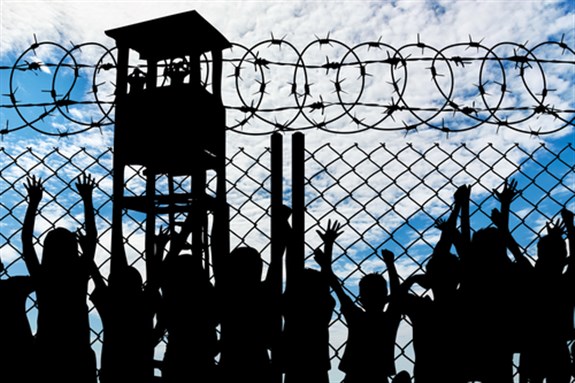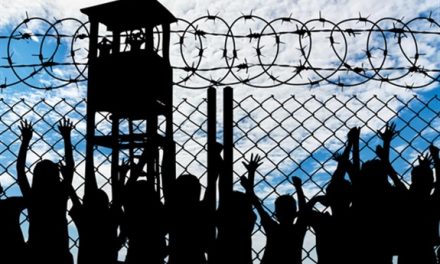Jadaliyya (J): Has there been a real surge in refugee outflow to Europe or is the media only now paying attention to an ongoing issue?
Susan Akram (SA): The flow of forced migrants has been ongoing into Greece and Italy for several years, but there has recently been a spike both in numbers and in the westward flow of forced migrants and refugees. Almost 500,000 people have crossed from the Mediterranean into Europe so far this year, and have defied efforts by peripheral European Union (EU) states, primarily Greece and Italy, to detain and prevent them from going farther into Europe.
Angela Joya (AJ): The world witnessed a dramatic rise in the number of refugees and displaced people since the nineties, however there has been a recent increase in the number of refugees linked to an escalation of the conflicts in Iraq and in Syria.
The Syrian conflict has added four million refugees to the 2014 global total of 11.6 million, bringing the number of refugees to over fifteen million . As a result, the number of asylum cases to Europe in 2014 increased by twenty-five percent compared to 2013. At the same time, over the past year and a half, there has been a sharp rise in the number of refugees drowning in the Mediterranean during attempts to reach Europe. The recent shocking images of lifeless bodies of children on the shores of Turkey and Greece have forced the media to pay serious attention to the refugee crisis, and generated pressure on governments and policy makers to produce a response to the crisis.
Moe Ali Nayel (MAN): The recent focus on refugees fleeing to Europe is the result of a combination of factors. First, the media only truly woke up to this phenomenon during the summer tourist season in Greece, with some British media outlets conveying condescending inconveniences voiced by British tourists.
Then the crisis became a ratings race so that even Lebanese media, whose coverage has generally overlooked the plight of the 1.1 million Syrian refugees in Lebanon, sent correspondents to Hungary to cover the flow of refugees to the European Union (EU). One Lebanese correspondent sent to cover the chaos had just made a bigoted comment the day before saying, “I want to see Lebanese people in Lebanon.” So while part of the current media focus has to do with television ratings and viewer traffic, it is also a historical event of massive human migration that cannot be ignored.
Yazan Al-Saadi (YAS): The recent upsurge in refugees to Europe is both real and a matter of the media finally spotlighting the story. Let me explain.
There is a very real increase in refugee populations heading to Europe. The available data shows that by mid-2015 the number of refugees heading to Europe, estimated at 350,000, had already surpassed the estimated total of 280,000 for all of 2014. So while the increase is real, the numbers also indicate this has been an ongoing phenomenon. The recent iconic picture of the drowned toddler captured media attention, and we’ve seen an abundance of stories about refugees/migrants going to Europe. But the problem is that this is being presented mainly as a new or unprecedented crisis. This does not match historical and recent records. There have been refugees and migrants going to Europe for a variety of reasons for many years. At least for now the Syrian crisis brought this marginalized story into the foreground.








